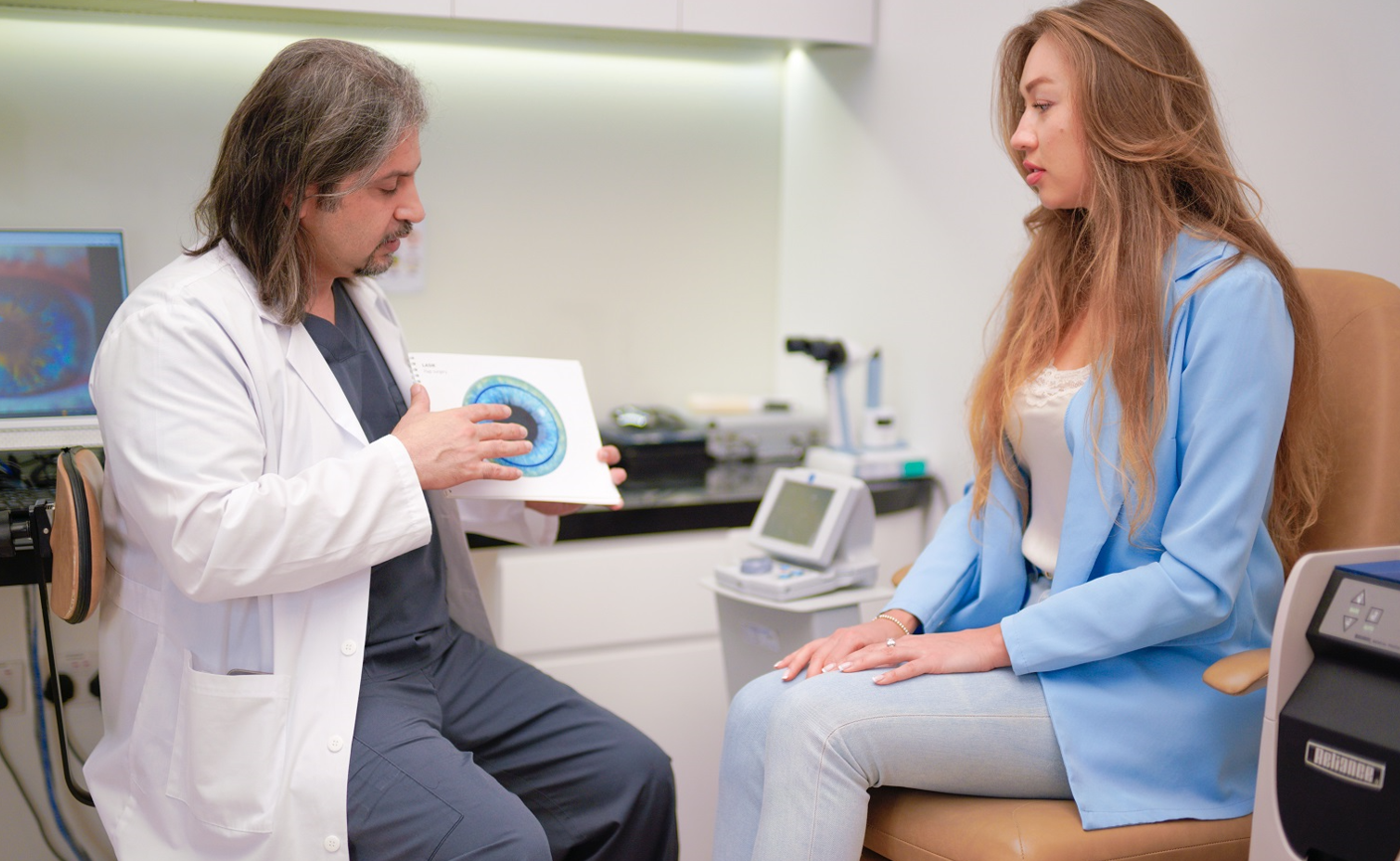SMILE, LASIK, and PRK/LASEK are the three most common types of laser eye surgery that you need to know about.
To differentiate what is effectively the same treatment, though packaged slightly differently, clinics come up with brand names such as UltraLASIK, Accu-wave LASIK, Custom LASIK, UltraLASIKplus, Zyoptix, and Wavefront LASIK. An example of this is offering LASIK as a standard treatment and an optional technology, such as wavefront measurement, as an add-on.
Laser eye surgery works pretty much the same despite the treatment you choose. A laser reshapes the stroma or tissue that makes up the cornea, the eye’s front window.
It eliminates refractive errors such as shortsightedness (myopia) and longsightedness (hyperopia) by making the cornea steeper or flatter depending on the prescription.
Bacteria and debris cannot enter the eye through its epithelium, which is its invisible barrier. Despite its strength, thickness, and ability to regenerate, it is incredibly thin. It is necessary to remove the epithelium or lift it out of the way so the stromal tissue can be exposed during laser eye surgery. Treatment types differ in how this is accomplished.
Differences between SMILE, LASIK, and PRK/LASEK
A PRK involves the complete removal of the epithelium. This way, a laser eye surgeon can reshape the permanent layer. A contact lens is applied for several days as a bandage, allowing the epithelium to re-grow underneath and populate again.
Unlike LASIK, LASEK only temporarily pushes the epithelium to one side rather than discarding it. The permanent layer is then reshaped underneath, and the epithelium is moved back. As the new layer forms underneath, a contact lens is applied to the surface to protect it.
Contrary to PRK/LASEK, LASIK creates a thin flap with a laser that includes the epithelium and a small portion of the stroma, the permanent tissue. As the flap is replaced afterward, the surgeon can reshape the permanent layer through this doorway. Only the flap edges must be sealed over, and no contact lenses are required.
The anatomical keyhole created by SMILE is the result of creating a tiny, connected tunnel that runs from the surface through the epithelium to the target tissue. LASIK creates a doorway in the epithelium, while SMILE creates a keyhole in the epithelium. This way, the epithelium is little affected, and the eye heals rapidly.
Here are the pros and cons of each.
ReLEx SMILE:
Laser Eye Surgery generally only corrects prescriptions up to -8 or -10. Because we do not make a flap from the corneal surface, patients with thin corneas and prescriptions higher than -10 can benefit from ReLEx Laser Eye Surgery at the North American Lasik Centre in Dubai.
ReLEx (refractive lenticule extraction) and SMILE (small incision lenticule extraction) are the most up-to-date approaches in laser eye surgery. A tiny keyhole incision in the cornea is all that is required to perform the minimally invasive procedure, which was introduced in 2011.
This is possible because SMILE uses a state-of-the-art laser, the Carl Zeiss VisuMax, to complete the procedure. SMILE can only be performed with the VisuMax femtosecond laser, the only femtosecond laser to offer such precision. In addition to its low-pressure increase, it is also the laser with the smallest amount of discomfort experienced by the patient. By placing pulses within the cornea, the laser creates bubbles no wider than 1/1000th the width of a hair and outlines the tissue to be removed, forming connections that can remove it.
The North American Lasik & Eye Surgery Centre does lasik smile eye surgery. Even though it sounds complicated, the process takes less than 4 minutes.
In addition to being smoother and faster, the treatment is also more comfortable. Furthermore, it is suitable for patients with very high prescriptions, drier eyes, and thin corneas since it has a shorter healing time than conventional LASIK.
The Pros of ReLEx SMILE
Treatment and Recovery time:
With SMILE, Laser Eye Surgery can now be performed in minutes using minimally invasive techniques. The tissue can be accessed and removed through tiny connecting tunnels in the outer cornea without requiring significant healing.
Safety and Comfort:
A new level of patient comfort is achieved with SMILE Laser Eye Surgery. As a result of SMILE, dry-eye symptoms will last approximately half as long over the recovery period as they would with other procedures. By replacing the flap with a keyhole, it also maintains corneal strength.
Suitability and High Prescriptions:
With SMILE, patients who are told they are not suitable for other treatments may be a good candidate because of its keyhole nature. It is impossible to remove enough tissue after making a flap in many patients for LASIK patients because their corneas are not thick enough. By using a very small and exact hole at the side of the eye, ReLEx SMILE can treat more demanding prescriptions because it leaves the front part of the cornea intact.
In summary, PRK/LASEK is an oldie but a goodie if you’re not a good candidate for newer procedures. In the short term, LASIK remains the most popular and sought-after treatment however, SMILE is gaining traction and will likely take the top spot as the most popular procedure. By April 2019, 2 million SMILE surgeries had been completed worldwide.



 Bitcoin
Bitcoin  Ethereum
Ethereum  XRP
XRP  Tether
Tether  Solana
Solana  USDC
USDC  TRON
TRON  Lido Staked Ether
Lido Staked Ether  Cardano
Cardano  Avalanche
Avalanche  Toncoin
Toncoin